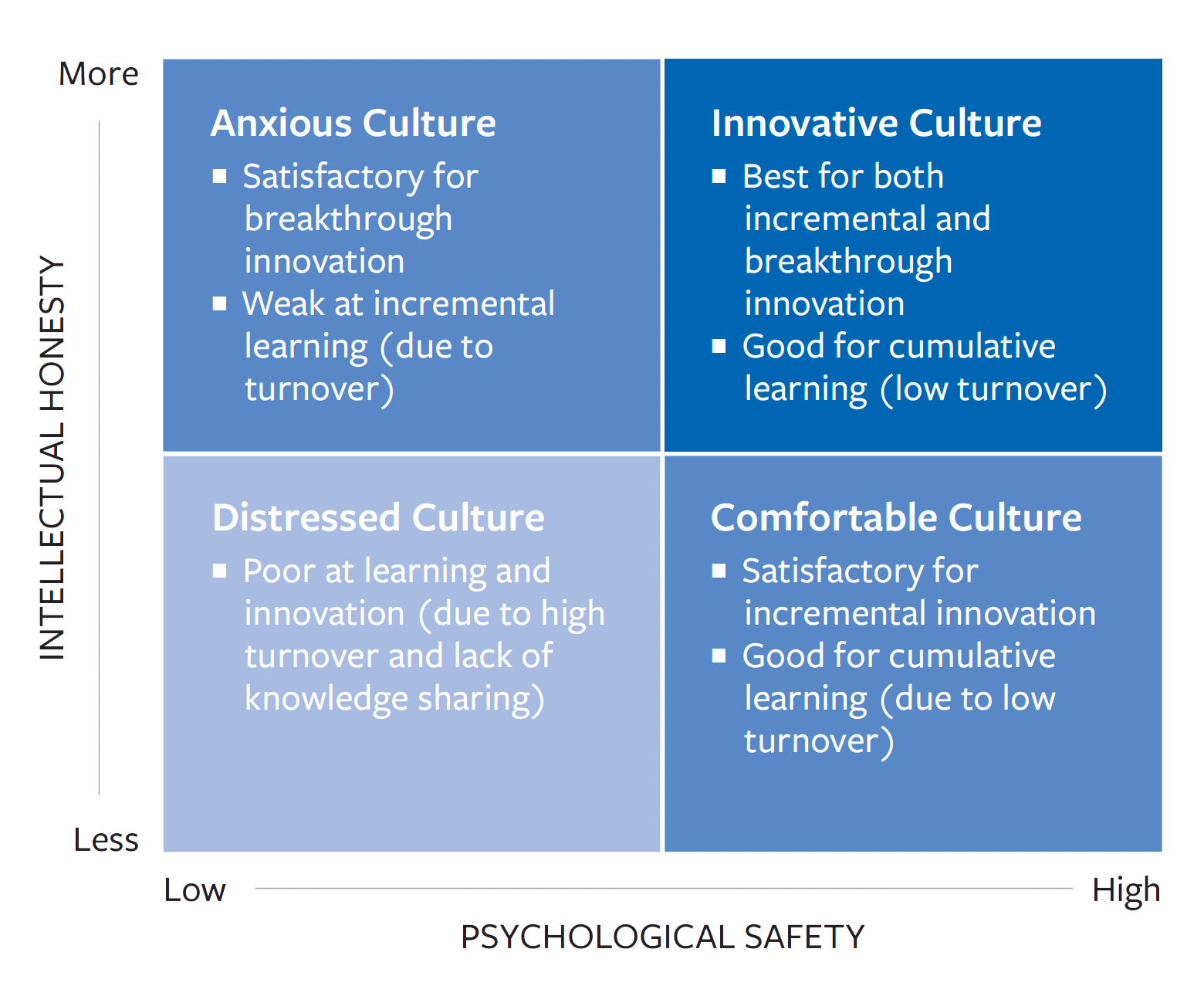Navigating the Paradox of Politeness and Transparency in High-Performing Teams
Psychological safety, the belief that one can express ideas and take risks without fear of negative consequences, is a foundational element of high-performing teams[1]. However, when taken to an extreme, pursuing psychological safety can inadvertently undermine another critical value: intellectual honesty.
In cultures where politeness is a deeply ingrained social norm, such as in Thailand, the desire to maintain harmony and avoid confrontation can lead to a lack of accountability and transparency[2]. Employees may hesitate to provide critical feedback or share potentially damaging information, fearing it could disrupt relationships or tarnish their reputation.
This dynamic poses a significant challenge for organizations fostering collaboration and innovation. Research shows that teams with high levels of psychological safety and cognitive diversity are more likely to generate novel ideas and solve complex problems[3]. However, if politeness takes precedence over honesty, the benefits of diverse perspectives can be lost.
The Influence on Culture

A recent article in the MIT Sloan Management Review, "Why Innovation Depends on Intellectual Honesty," highlights the importance of creating conditions for healthy debate in addition to fostering psychological safety[6]. The authors present a matrix illustrating how different organizational cultures can impact innovation and learning. An "Innovative Culture" that prioritizes both psychological safety and learning is best positioned for incremental and breakthrough innovation. In contrast, a "Distressed Culture" characterized by low psychological safety and a weak emphasis on learning may struggle with innovation[6].
Many organizations attempt to address this issue by investing in team-building activities, hoping to strengthen interpersonal bonds and create a more cohesive culture. While well-intentioned, these efforts can backfire. By emphasizing friendship and politeness, team-building can actually reinforce the very norms that inhibit open communication and constructive feedback.
The Role of Recognition & Feedback
The solution lies in creating a culture that rewards honesty and transparency, even when it feels uncomfortable. Leaders must model vulnerability and intellectual humility, acknowledging their own mistakes and limitations. They must also create psychological safety not just for agreeing but for respectfully dissenting[4].
One powerful tool is recognition. By openly praising employees who provide candid feedback and share valuable insights, leaders can signal that honesty is not just accepted but celebrated. This can be particularly effective when recognition comes from peers, as it reinforces the idea that the entire team is committed to growth and improvement.
Peer Recognition Software
Technology can play a key role in facilitating this shift. Platforms like Happily.ai provide a structured way for team members to share feedback and recognition, ensuring that contributions are visible and valued. By leveraging AI and behavioral science, these tools can help teams build habits of transparency and accountability while still maintaining a sense of psychological safety.
The impact can be transformative. Organizations that successfully balance psychological safety and intellectual honesty report higher levels of innovation, employee engagement, and overall performance[5]. By fostering a culture of integrity, they unlock the full potential of their diverse teams.
Ultimately, the path to high performance requires navigating the paradox of politeness and transparency. By prioritizing honesty, even in the face of discomfort, and leveraging tools that facilitate open communication, leaders can create psychologically safe and intellectually vibrant teams. The result is a more collaborative culture and a more adaptive and resilient organization.
References:
[1] Edmondson, A. (1999). Psychological safety and learning behavior in work teams. Administrative Science Quarterly, 44(2), 350-383.
[2] Nembhard, I. M., & Edmondson, A. C. (2006). Making it safe: The effects of leader inclusiveness and professional status on psychological safety and improvement efforts in health care teams. Journal of Organizational Behavior, 27(7), 941-966.
[3] Nemeth, C. J., & Nemeth-Brown, B. (2003). Better than individuals? The potential benefits of dissent and diversity for group creativity. In P. B. Paulus & B. A. Nijstad (Eds.), Group creativity: Innovation through collaboration (pp. 63-84). Oxford University Press.
[4] Edmondson, A. C., & Lei, Z. (2014). Psychological safety: The history, renaissance, and future of an interpersonal construct. Annual Review of Organizational Psychology and Organizational Behavior, 1(1), 23-43.
[5] Happily.ai. (2023). Case Studies. https://happily.ai/case-studies
[6] Dyer, J., Furr, N., Lefrandt, C., & Howell, T. (2023). Why innovation depends on intellectual honesty. MIT Sloan Management Review.









